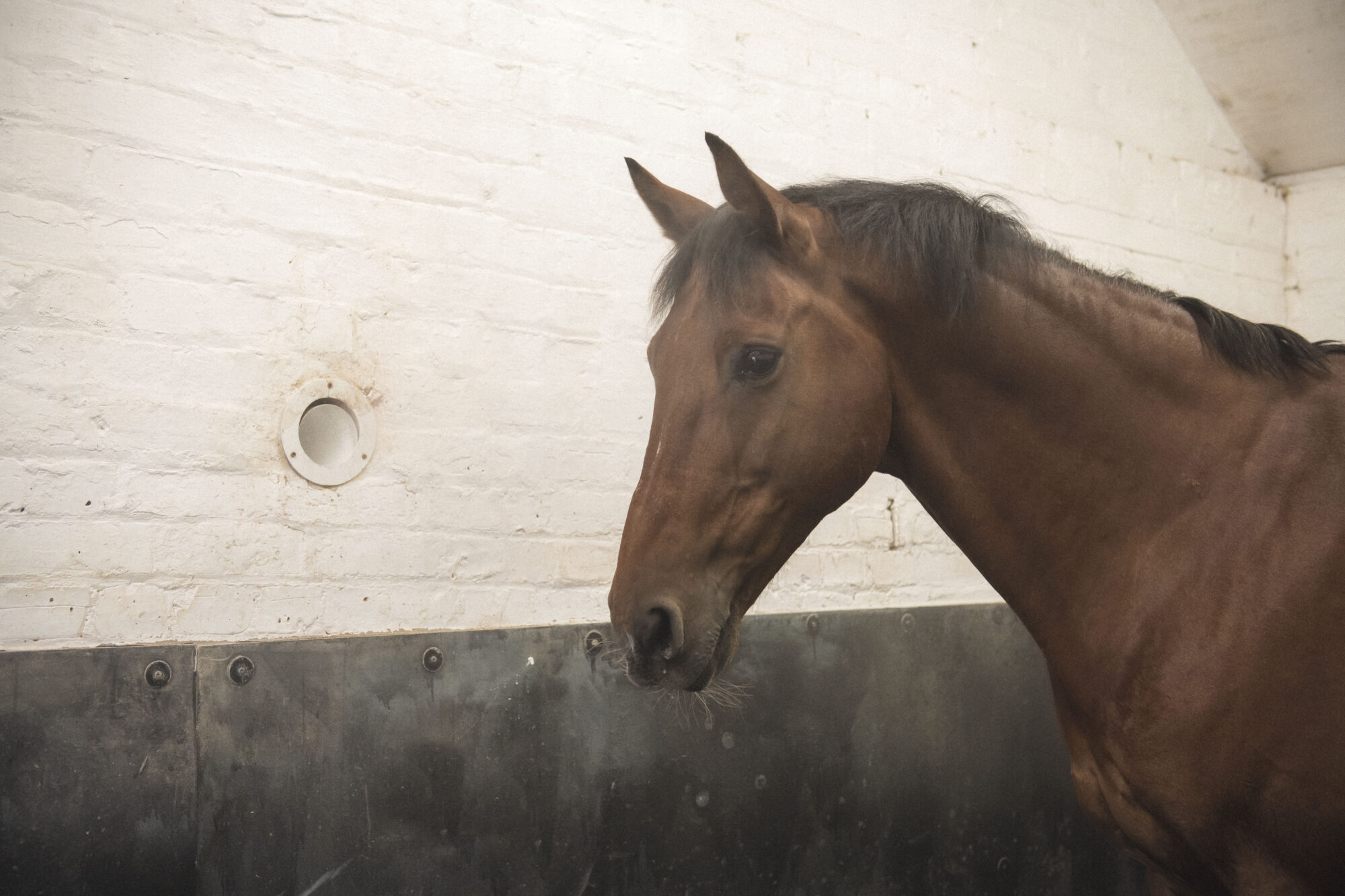In this blog we’re sharing everything you need to know about the equine salt therapy chamber and the benefits for your horse in winter. We know that lots of our customers haven’t come across an equine salt therapy chamber before and would love to learn how it can help their horse cope with winter, hopefully bouncing into spring healthy and happy. With the country currently swimming in flood water after Storm Henk and a lot of weeks of winter still to go, this could be the blog that solves some long-running horse health issues. So, without further ado, let’s get started…
What is an equine salt therapy chamber?
The salt therapy chamber here at Thorpe Farm initially looks a lot like a stable, but if you look more closely, you’ll spot that there’s an inlet pipe on one of the walls. That allows us to pipe dry, salt-enriched air into the stable where it’s breathed in by the horse during its therapy session. There is a regulator in the room which keep the salt at the required level. The air is full of tiny aerosol particles of salt that the horse can’t feel but are taken into the respiratory system with every breath. Because the horse doesn’t breathe in all the air that’s pumped in, some of it also settles all over the horse’s coat, mane and tail, where it works its way to the skin.
How does the equine salt therapy chamber work?
The process is very simple. The horse who is being treated stands in the salt therapy chamber without a rug on for around 20 minutes. Salt-enriched air is piped in and, as we mentioned above, the salt particles will then reach the trachea (windpipe), the bronchi (the two tubes branching off to each lung) and eventually the smaller tubes called bronchioles.
The salt will also settle on the coat – which is why it’s so important that the horse doesn’t wear a rug during their treatment, even if they’re there for support with respiratory issues. They will still benefit from the soothing effect of the salt as it settles against their skin, and you never know – you might prevent them getting itchy and sore before it even becomes apparent to you.
So why do we use salt when there are so many effective aerosol medications out there? Salt has five properties that make it hugely beneficial to horses:
- It has an anti-inflammatory effect, so it helps soothe horses who are sensitive to stable dust, particularly when they are stabled for long periods in the winter months.
- It has antibacterial properties, killing some types of bacteria by drying them out, which can help a horse battle some common infections.
- It’s an antifungal too! That means if your horse is sensitive to mould (especially during a winter as wet as this one) you have a tool to fight back!
- It can help loosen mucous in the airways, making it easier for horses suffering from respiratory irritation.
- It’s totally natural and drug-free! OK, so that one was technically two properties in one, but you get our drift. There’s no need to worry about withdrawal time before a competition or pumping your horse full of medication when there’s a chance the salt therapy chamber can make a difference.
How can salt therapy benefit your horse in winter?
Our little island can throw everything at horse owners. In the two weeks since Christmas the different corners of the British Isles have experienced torrential rain, flooding, wind, fallen trees, sunshine, frost, snow and mud. We’re not sure if ‘mud’ counts as weather, but every horse owner in the UK knows it’s part and parcel of life here from autumn until spring (and sometimes beyond).
Stabled horses in winter
Cold and wet winter weather can mean horses spend more time stabled than they do during the warmer months. Extended time in the stable means they spend longer exposed to stable dust from the bedding and forage. Even with the best ventilation, they simply won’t get as much fresh air as they do when turned out. And if your horse is messy and you’re only able to muck out in the morning and skip out in the evening, they could suffer from ammonia irritation until you find bedding that works. The salt therapy chamber can help support a healthy respiratory system and soothe irritation if it does occur.
Horses turned out in winter
If you’re lucky to have land that drains well and your horse can still be turned out for long periods of time during the winter months, you may have to watch out for two other health issues – mud fever and rain scald. If you end up battling a skin issue – or you’d like to give your horse’s skin some support because they wear a rug virtually 24/7 during winter – the salt therapy chamber can help. The skin is the horse’s largest organ, and it contributes to the overall wellbeing of the animal, so it’s vital that it is as healthy as possible. The salt that settles on the coat during sessions in the salt therapy chamber and works its way to the skin helps soothe any irritation and keep aid healing.
If this blog has piqued your interest in our equine salt therapy chamber, why not book a session for your horse? You’ll find more information about this the rest of our facilities here: https://thorpefarmrehabandfitness.co.uk/facilities/
